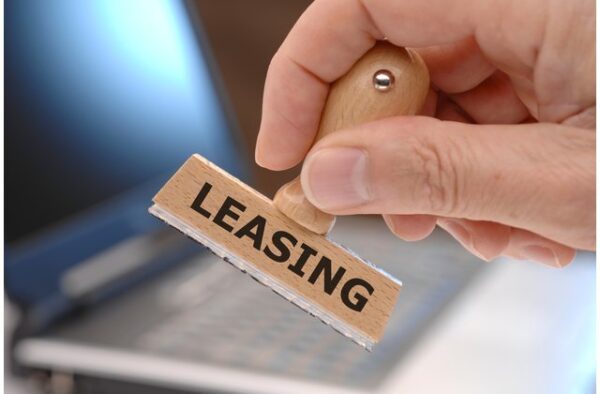
Big Mistakes to Avoid While Leasing a Car
Mistakes to Avoid While Leasing a Car though Car leasing is an excellent option for you if you are not interested in a long-term commitment. When you get into a lease, you’re financing the car for a set period, and when the lease is over, you hand the keys back over to the car dealer. It is a great option for the customers who don’t want to keep a car for a long term or those who want to drive a new car every few years. Plus, you won’t have to worry about significant repairs—no wonder why leases make up for nearly one-third of car purchases.
That’s said, many people commit mistakes while leasing a car. Some people don’t read their lease agreements. Some lease the vehicle for too long. Some pay too much money upfront. In fact, you can end up paying much more than a new car if you are not careful. While shopping around for a car leasing, make sure to avoid the car leasing mistakes given below.
Mistakes to Avoid While Leasing a Car
Big Upfront Payment:
Many car dealers promise low monthly payments on new vehicles but there are Mistakes to Avoid While Leasing a Car. However, you might be asked to put down a thousand dollars upfront to get that payment. That money includes a portion of the lease in advance. God forbid if your leased car is damaged or stolen within a few weeks.
In this scenario, the insurer would reimburse the leasing company for the value of the car, but the money you paid in advance won’t be refunded to you. Despite having spent a considerable amount of money, your ownership of that car might not be considered.
Therefore, make sure to put down no more than $2000-2500 early or even nothing when you lease a car. Paying less upfront or nothing can raise your monthly payment a little higher, but you would have peace of mind if your car would be stolen or wrecked. The upfront money could be used in paying up the monthly lease.
Underplaying Your Annual Mileage:
Mistakes to Avoid While Leasing a Car, one of the conditions you have to agree to how many miles you put up on the car. Generally, mileage can set anywhere from 12,000 to 15,000 miles a year. Exceeding that limit means you have to pay a fee for every mile you drive over. Generally, this could be 25 cents per mile, which can quickly go up if you drive constantly.
Before you get into a lease, make sure to assess your driving habits to determine the feasible leasing limits. If you often drive on long routes, you can request the dealer to extend your mileage limit. However, it still costs you. This scenario can lead to increased monthly payments, or you’ll be asked to prepay.
Try to keep the miles under 10,000.
Make sure to negotiate with your dealer to lower the price for those miles that go up. One more thing—ask your dealer to let you receive credit back for any unused miles.
Not Maintaining the Car:
Normal wear and tear are acceptable, but if your leased vehicle ends up with significant damages, you will be liable to pay for the repairs. Make sure to read your lease agreement on how it defines “damages” or “wear and tear.” This is because the definition of car damage varies based on the dealer. The car goes through an intensive inspection for damages before you turn it in.
Leasing for Too Long:
Mistakes to Avoid While Leasing a Car tip: Don’t lease a car for more than three years. After all, your principal reason to lease is to avoid maintenance costs and wear and tear on your vehicle. If you opt for a 4-5 year lease, you are running into the risk that you will have to pay for maintenance and repair along with your monthly lease payment. Therefore, there is no reason to leave a car for longer than three years. If you are looking to keep a vehicle for the long term, consider buying a new car.
Not otiating the Price:
Most people are likely to forget to negotiate the price of the car. Instead, they look for minimizing monthly payments or lease terms. Keep in mind that this mistake can eat up thousands of dollars. Some leases are fixed with specific conditions, but most leases can be negotiated. First of all, determine the real value of the car you are looking to lease. Then, use your homework to negotiate with the dealer. The predetermined worth of the car at the end of the lease term, also known as the residual value, can also be negotiated. Your research will help you lower your monthly payments.
Not Having GAP Insurance:
This is one of the biggest Mistakes to Avoid While Leasing a Car.
A leased car, just like purchased cars, starts losing their value as soon as they hit the road. If your vehicle is damaged or stolen, your insurer will pay off the value of the car, making you pay the difference of what you agreed upon lease term payment. Simply put, the insurance company only pays for the value of the vehicle, not the amount you still owe on the lease or loan.
It leads to a huge payment for a car that only lasted one day. The dealer will still look for the money that you agree to pay in your lease term. If you don’t have GAP insurance, you are liable to pay that “gap” or difference. GAP insurance fills this difference, eliminating the need to paying out of pocket.
For example, the value of the vehicle is $13,000. The insurance company says the market value is only $ 9000, meaning that you have to pay $4000 out of pocket in case your car is damaged or stolen. But GAP insurance will pay off this gap.
So these are the mistakes to avoid while leasing a car.

